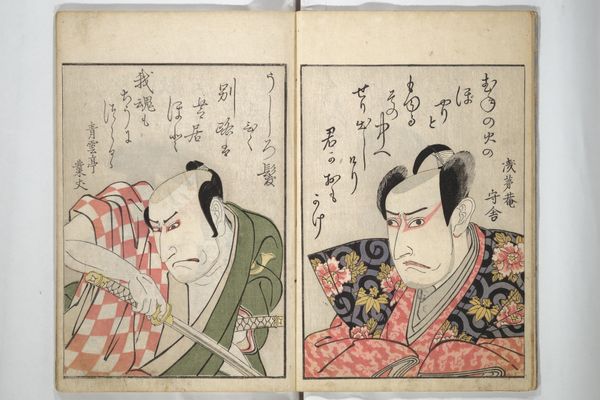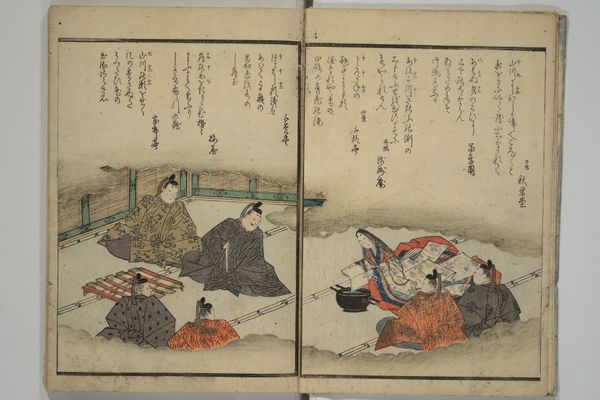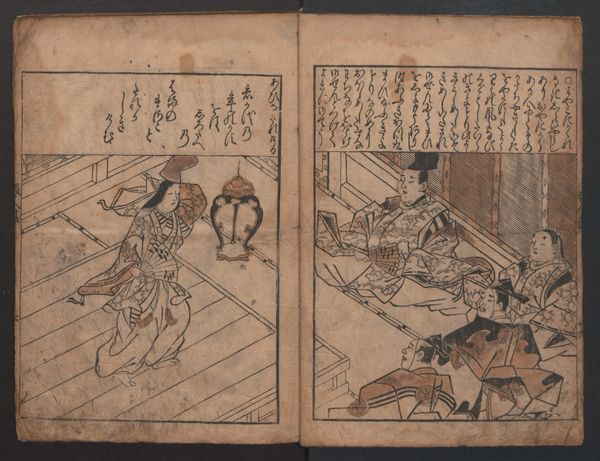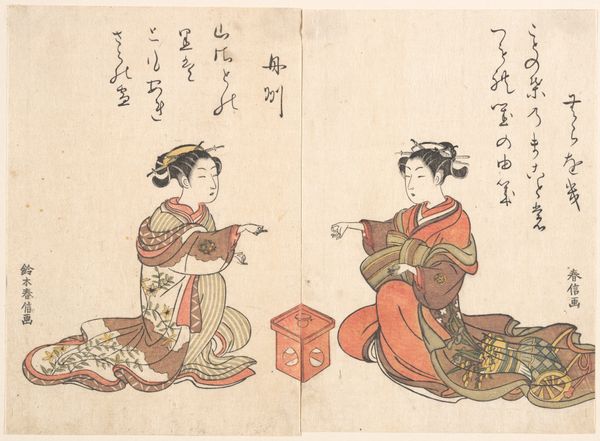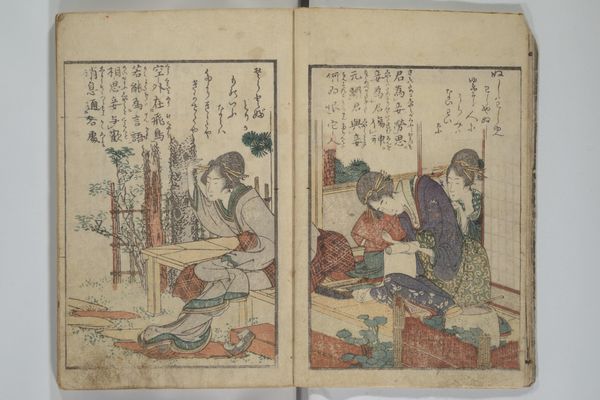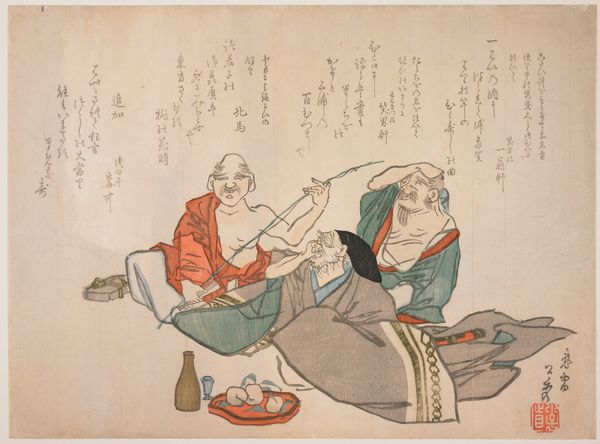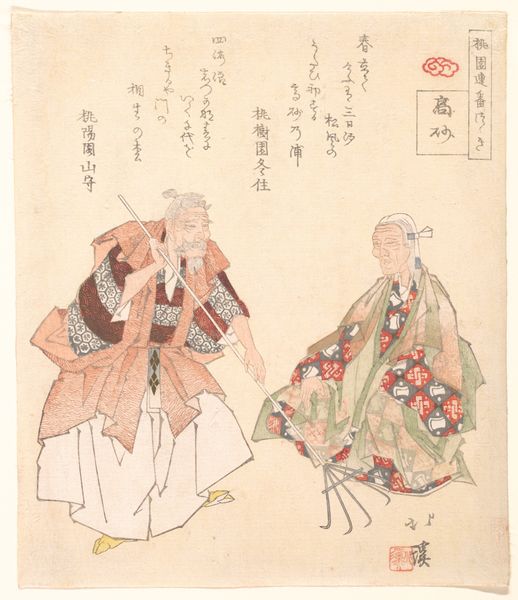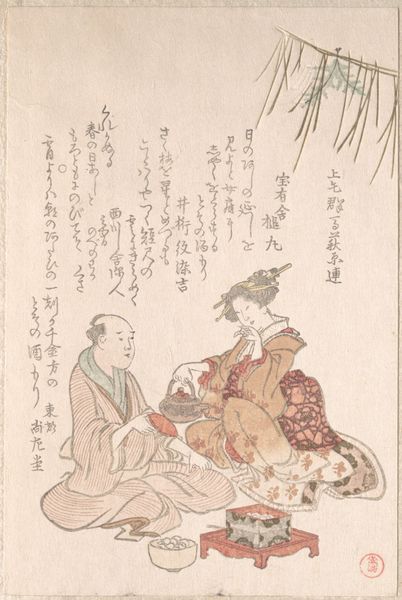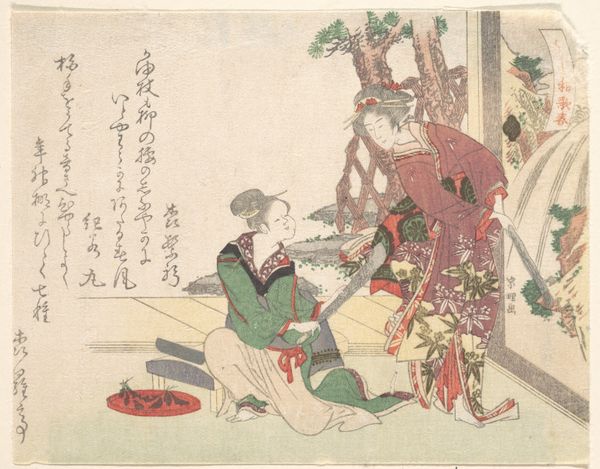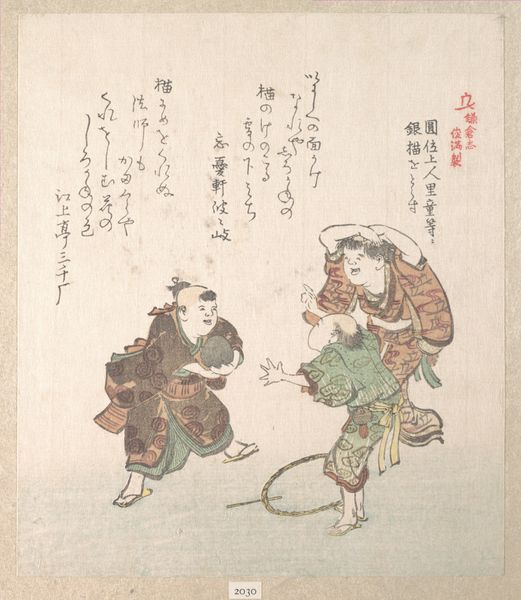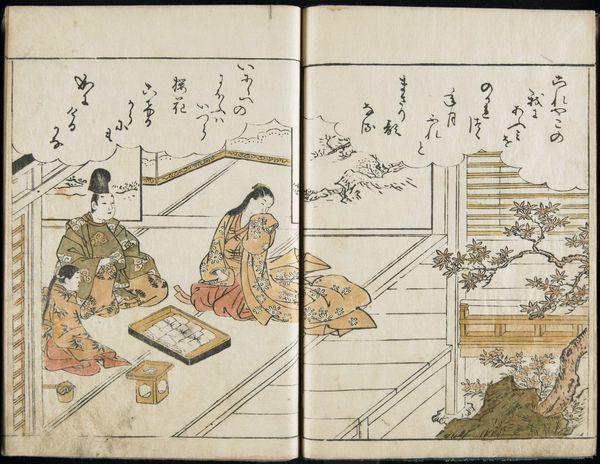
A New Series of Fifty Poets' Stanzas of the Temmei Period; A Bookcase of Humorous Poems in the Azuma (i.e. Edo) Style 1786
0:00
0:00
drawing, print, paper, ink
#
portrait
#
drawing
#
aged paper
#
toned paper
# print
#
book
#
asian-art
#
ukiyo-e
#
paper
#
ink
#
men
#
genre-painting
Dimensions: 10 1/4 x 7 in. (26 x 17.8 cm)
Copyright: Public Domain
Curator: This delightful book spread comes from "A New Series of Fifty Poets' Stanzas of the Temmei Period; A Bookcase of Humorous Poems in the Azuma (i.e. Edo) Style" created in 1786 by Kitao Masanobu, also known as Santō Kyōden. It's currently held at the Metropolitan Museum of Art. Editor: I am struck by the visible signs of age, the toned paper. It speaks to the life and history of this object, of handling and preservation across centuries. The starkness of the ink too-- what does it tell us about printmaking in that time? Curator: Well, the figures depicted are each accompanied by a poem, contributing to a wider artistic dialogue of the late Edo period and this interest in linking portraiture with poetry, with subtle satirical social commentary running through them. You have the elegant, fan-bearing figure, offset by the one next to him who looks ever so slightly grumpy! Editor: Note how both figures are seated directly on the ground. That is crucial to understanding that their posture conveys an element of humbleness or a lack of rigidity; perhaps this relates to what the people found amusing at the time, by subverting what they expect of someone in power. I see that their robes are highly decorated, what could they mean? Curator: I'm particularly drawn to the seated figures themselves. Consider how their individual personalities are hinted at through posture, dress, and subtle facial expressions, all codified through iconographic tradition to telegraph distinct aspects of their social status. And look how their garments almost speak, as though in their attire, a message unfolds. Editor: Considering this was a printed work accessible to many, this likely shows a democratisation of portraiture and cultural commentary during this period. That’s something very exciting when analyzing what these works signify. Curator: Agreed! It's that intersection of the social critique with refined aesthetics that gives ukiyo-e such lasting appeal, it serves as both mirror and lens across time. Editor: Yes. Reflecting on the choices in material and design gives even more appreciation for its enduring impact.
Comments
No comments
Be the first to comment and join the conversation on the ultimate creative platform.
